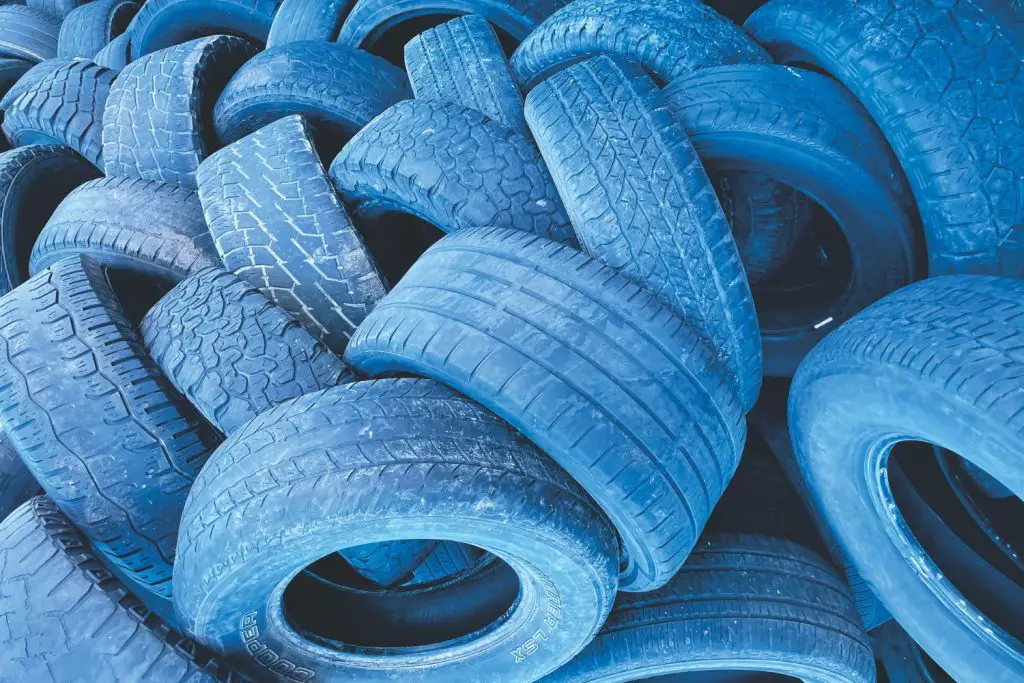We may get commissions for purchases made through links in this post. Thanks for the support! 👍
Road safety is of utmost importance. However, it’s not uncommon for some people to overlook dangerous signs which may appear insignificant. One such common mistake is driving your car with tires that have visible cracks.
It is not safe to drive on tires that have cracks in them. Visible cracks are a sign of rubber degradation, which increases the risk of tire blowouts. Sudden tire blowouts can cause you to lose control of your vehicle, posing a danger to yourself and others.
In this article, I will explain why you should avoid driving with cracked tires and suggest some actions to take when you notice visible cracks in your car tires.
Why You Should Never Drive With Cracked Tires
Cracks appear on tires that are beginning to break down. Therefore, it is unsafe to keep driving your vehicle once you’ve noticed the appearance of these cracks, however small they are.
Even tiny cracks can deepen and expand briefly, causing the sidewalls to blow out completely. They present a serious risk, especially when driving.
When driving with cracked tires, you are likely to lose balance and control of the wheel if one of the tires on your vehicle blows out, especially at fast speeds. There is also a high likelihood that your car will veer off the road or topple over, which can have fatal results.
Cracks on the tires pose as much of a safety risk as driving with the incorrect tire depth—side blowouts due to cracks cause explosions or rapid loss of tire pressure.
If unprepared for such an event, your vehicle could swerve violently on the road towards oncoming traffic or the side of the road.
What Causes Cracks in Tires?
Some of the most common causes of cracks in vehicle tires include the following:
- Exposure to chemicals
- Exposure to the elements such as high temperatures that cause tire degradation
- Exposure to UV light
- Exposure to certain oils
- Dry rot underneath the tires
- Overinflation and underinflation
- Poor patch jobs and tire punctures
Vehicle tires crack and begin to break down when the flexibility of the rubber material deteriorates over time. While this deterioration is expected and due to regular wear and tear, the above factors accelerate this degradation. They may cause cracks before natural wear, and tear take effect.
While these tires begin small, they tend to expand and grow with time as the rubber continues to deteriorate. You may see most of these cracks forming in the side walls of the tires. With time, they can extend to the top of the tires.
For safety, you must not ignore visible tire cracks, which may cause the sidewalls to break open, resulting in vehicle instability.
What To Do When Your Tires Have Cracks in Them
Although tire cracks pose serious risks, they’re a relatively common occurrence. You may notice crack formation even in tires that have not been used heavily. In most instances, this signifies that the tires may have had some manufacturing defect that warrants urgent addressing.
In any case, don’t hesitate to seek the services of a trusted tire professional to inspect the cracks in your tires.
There’s a great possibility that you will have to get new tires (this website is a great place to start). Even if the cracks are small and within a reasonable depth, they still pose a severe risk to the structural integrity of the tires. Therefore, this makes them unsafe to drive.
However, not all tire cracks are dangerous. Only visible cracks are hazardous, indicating they have some depth. Therefore, you should rest easy if the cracks on your tires are too small and invisible.

- The Difference Between ZR and R on Tires: Past and Present
- Replacing Only Two Tires? You Might Need To Replace All Four!
- Looking at Why Cars Don’t Have Airless Tires Yet
Handy Tips To Prevent Crack Formation in Tires
It pays to be aware of some of the possible safeguards you can put in place to prevent cracking and optimize your tire’s longevity. Consider these handy tips:
- Ensure that your car tires are well-inflated. Overinflation can lead to premature wear and tear, reduced performance, and even the emergence of tire cracks. Overinflation can lead to tire failure in extreme cases, resulting in costly repairs or accidents.
- Clean your vehicle tires regularly. Keeping your tires in good condition requires regular cleaning and maintenance, especially after they have been through snow or mud. These surfaces can speed up rubber degradation if not properly cleaned off.
- Keep your car in a garage when not in use. Keeping your vehicle uncovered leaves it vulnerable to rain, snow, sleet, and extreme temperatures, which can take a toll on the condition of the tires. Rubber is sensitive to heat and cold and may become cracked due to exposure to extreme temperatures.
- Keep the vehicle tires away from standing water. The longer these tires sit in standing water, the higher the risk of developing cracks within a shorter period.
- Avoid physical damage to the tires. Be careful not to hit curbs and corners or drive aggressively.
However, even after taking the above steps, your tires will continue functioning within their expected lifespan. Most tires have an expected lifespan of 5 to 7 years from their manufacturing date.
As a rule of thumb, replace your car tires every five years to prevent cracks from dry rotting or other reasons. You may inquire from your tire manufacturer about the expected lifespan of your tires so that you can stay on top of the inevitable degradation.
Conclusion
It is unsafe and not recommended to drive on tires with visible cracks. However, while not all cracks are dangerous, it’s essential to take your vehicle to a service center or consider replacing the tire when you notice cracks, however small they are.
You can reduce rubber degradation and prevent cracks by ensuring your tires are clean, well-inflated, and away from standing water and physical damage. Still, replacing your tires every five years or so is necessary, depending on their expected lifespan.



